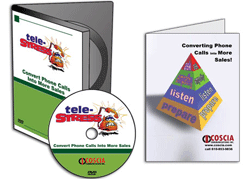
|
| Richard D. Alaniz |
Union membership in the private sector stands today at a mere 6.9 percent, down drastically from its high of 35 percent during the mid-1950s. Even more strikingly, today’s 6.9 percent union membership rate represents an even lower union membership rate than in 1929, before passage of the National Labor Relations Act (NLRA), New Deal-era legislation which protected employee attempts to unionize a workforce. Without political intervention, most believe that union membership in both the private and public sectors would continue to decline and soon be a thing of the past.
But, unfortunately for the business community, political intervention came in the form of the Employee Free Choice Act (EFCA), which was designed to aid unions in their organizational efforts. The EFCA ultimately lost steam and now appears dead, but President Obama’s recent nominations to the National Labor Relations Board (NLRB) stacked the board with three union-friendly Democratic board members to one Republican. And, with one Democratic appointee’s term having already ended and another’s set to expire at the end of the year, the Democratic majority was expected to act quickly to attempt to remedy the sharply declining union membership rate.
They did not disappoint — in the last three months, among a variety of other actions, the board has issued a rule requiring the posting of a notice describing employee rights to unionize under the NLRA, issued an opinion laying the groundwork for unions to unionize the smallest of bargaining units, and proposed a rule that would significantly speed up union elections and prevent employers from mounting challenges until after the election is complete. The clear impact of these moves is to pave the way for unionizing attempts in the workforce. Employers should be aware of the board’s recent actions and should take action now to minimize their effect and recognize signs of a unionization campaign amongst their employees.
Mandatory Employee Rights Notice
Effective Nov. 14, 2011, virtually every employer in the country will be required to post a pro-union notice describing an employee’s right to join a union in their workplace. Some of the things that will show up in the notice are the employee’s right to join or assist a union as well as their right to strike or picket the employer. The notice will also declare that employers cannot prohibit employees from soliciting union sentiment during non-work time or fire, demote, transfer, or threaten an employee for supporting or promoting a union.
A printable notice has been released by the NLRB, and is available on its website (www.nlrb.gov/poster). The notice must be placed in a conspicuous place where it can be seen by all employees, and if at least 20 percent of the workforce speaks a language other than English, the notice must also be posted in that language. Further, a physical posting alone may not be sufficient — if the employer customarily posts personnel rules or policies on a company Internet or Intranet site, the notice must also be posted there or contain a link to the NLRB’s website. So what can you do to minimize the notice’s impact?
• Consider posting an employer response along with the NLRB notice. Your response cannot include any threat or promise of benefit, but it can be persuasive. It may also emphasize positive aspects of the company such as the lack of layoffs during the downturn or the extra overtime everyone has been enjoying recently. Remind the employees that there is no guarantee this will continue if a union enters the workplace. Your response may also mention other parts of labor law such as an employee’s right not to be in a union and general instructions on how to resign from a union if an employee wants to. Before you post any response, however, you should have your labor attorney review the notice to ensure compliance with the NLRA.
• Switch to the commercially marketed labor law posters. If you believe that posting an employer response would only attract more attention to the notice, you should consider purchasing the large laminated posters from private vendors. And, if you already display these posters, be sure to purchase updated versions that include the notice. These posters contain all of the legally required employee notices, and prevent any single notice from gaining unwanted attention.
• Adopt and enforce a No Solicitation Policy. The notice informs employees that they may hand out union materials at the work place and cannot be fired for it. Federal law prohibits employers from preventing this but a No Solicitation Policy prevents employees from going so much as one-inch further than what the law requires. And it keeps union organizers off the premises.
Quickie Elections on the Horizon
In late June, the Board proposed a set of rules that would significantly change the union representation election process. Although the rules are not yet final, most expect them to be final in the very near future. The rules would drastically reduce the timeframe from the filing of the representation petition to the union election, bringing the election to just 10 to 21 days from the filing of the petition.
While it may not seem significant, this is a huge deal. Typically, unions will campaign workers for months prior to the election being conducted, almost always without any employer knowledge. Under the proposed rules, employers could have as little as 10 days to mount an opposition campaign to employees that have been exclusively hearing the union’s pitch for well over half a year. In 2009 and 2010, unions won approximately 68 percent of elections. Under these new rules, expect that number to swell significantly.
Also under the proposed rules, employers would be required to provide a final list to the union of all eligible voters within two days, compared to seven days under the current rule. The current rules and regulations only require the employer to provide the names and addresses of employees, but the proposed rules would also require the disclosure of phone numbers and email addresses as well. The proposed rules provide unions an incentive to engage in gamesmanship by filing a petition, obtaining the list of employee information, withdrawing the petition, and conducting a more thorough campaign with the extensive contact information of employees. Once the union has identified sympathetic employees, it could file a petition strategically defining the bargaining unit to include sympathetic employees, thus making an election a certain win for the union. This strategy becomes even more effective in light of the board’s recent support of micro bargaining units in its Specialty Healthcare decision.
Micro Bargaining Units Allow Unions to Gerrymander Support
In Specialty Healthcare, the board sanctioned a union’s ability to define the bargaining unit essentially however they choose, paving the way for micro bargaining units. The board stated that it will not broaden the union’s proposed bargaining unit unless the employer can show that other employees not included in the unit share an “overwhelming community of interest” with those in the petitioned-for group.
By rendering a union’s narrowly-defined bargaining unit to be presumptively appropriate, unions are now free to comb through your workforce for support, ultimately choosing a sub-department of interested employees instead of having to mount a campaign for an entire department or division of your workforce. It is no different than gerrymandering voting districts; unions will combine groups of sympathetic workers to manufacture a desired result, and employers will have very little they can do in response.
This new standard, combined with the board’s proposed quickie election rule, will make it “virtually impossible for an employer to oppose the organizing effort either by campaign persuasion or through [board] litigation,” according to board member Brian Hayes. And, considering that an election can take place as early as 10 days from the filing of the petition under the proposed rules, unionizing attempts will resemble the German Blitzkrieg.
Protect Your Company by Recognizing Union Activity
Your best defense to these aggressive moves by the NLRB is to educate your supervisors about the signs of a union campaign in your workforce:
• Dissolving Groups — The dissipation of a group of employees when a supervisor or manager approaches indicates that something is amiss.
• New Leaders — Unions foster new leaders, and ‘natural leaders’ are not typical leaders for the union. Usually, there is some new issue or information given to these employees that motivate them to become new leaders.
• New Allegiances — The formation of new allegiances, and breaking of prior friendships indicates that a major controversy, possible union-related, is dividing the workforce.
• Confrontational Attitudes — To gain attention, unions often attempt to stage a highly visible confrontation with management. Also be on the lookout for off-the-cuff comments suggesting that union membership would be beneficial.
• A Sense of Distance – Trust your gut feel on this one. Although difficult to describe, in-tune managers and supervisors often describe a new sense of distance between themselves and their employees. Employees will less frequently seek out supervisors for guidance, assistance, or just everyday small talk.
Because your supervisors are the closest link to employees and will first recognize the signs of a union campaign, it is important that they understand the significance of the tell-tale signs. Impress upon them the importance of relaying any suspicious activity to a specific member of management, so that purposeful and direct action can be taken without delay. Once union activity is uncovered within your workforce, contact your labor attorney immediately. The timeframe for mounting an opposition campaign is short, and experienced guidance is necessary now more than ever.
Publication date: 10/24/2011








